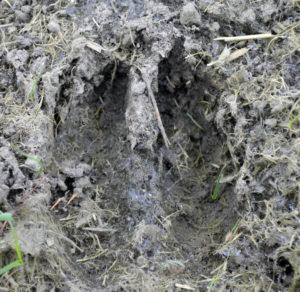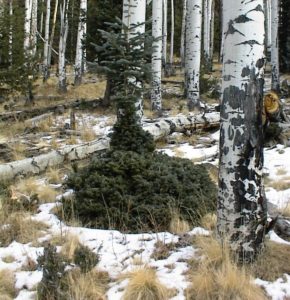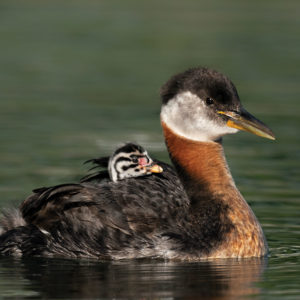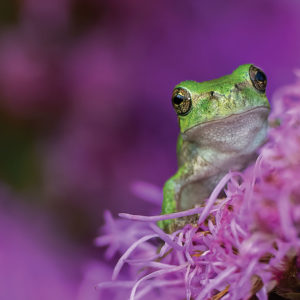Spotting White-Tailed Deer in your Neighbourhood
This month’s calendar image of a white-tailed deer is courtesy of Chris St. Michael, who captured this picture of a young buck on a snowy search for wildlife shots.
White-tailed deer are the most common large mammal in North America and the most widespread (they can be found in all 10 provinces as well as the southern parts of Yukon and the Northwest Territories!).
However, these secretive deer can sometimes be tricky to spot despite how many of them there are. Here are some tips for spotting the presence of white-tailed deer in your area.
 Hoof prints
Hoof prints
Hoof prints are often the easiest way to spot the presence of white-tailed deer in your area. Look in patches of snow and mud to find tracks that show where deer are passing through your area.
Deer trails can also be helpful for spotting their presence. Look for what appears to be an overgrown or underused human trail. These trails can often be found intersecting human paths in wooded and grassy areas.
Rubs
One sign to look for is rubs on trees. Male white-tailed deer will rub their horns on trees to mark their territory, leaving a distinctive bare patch on the tree. Look for bare spots on trees about 2 or 3 feet up with ragged bark around the edges.
Droppings
Droppings are another great way to spot the presence of white-tailed deer in your neighbourhood. Look for dark![]() pellets that are smooth, shiny, and with no obvious sign of their contents. They are often pointy at one end and stick together in clusters.
pellets that are smooth, shiny, and with no obvious sign of their contents. They are often pointy at one end and stick together in clusters.
Food
White-tailed deer normally browse for food from the ground to about 5 feet up on trees and bushes. Look for branches that are stripped of twigs and leaves or stripped entirely bare on part of all of their bottom halves, leaving the top untouched.
Particularly in the winter, look for this on sumacs, yellow birches, white pines, white cedars and on maple trees to tell you that there are white-tailed deer around.
In Person
There are also ways to spot a white-tailed deer in person. While they are secretive and hard to see during the day, at dawn and dusk they are at their most active, and can often be seen on the wooded edges on roads or in the middle of meadows and grassy areas.
 Keep an eye out for a tan or reddish coat in the summer or a grey-ish brown coat in the winter hiding in the trees and grasses.
Keep an eye out for a tan or reddish coat in the summer or a grey-ish brown coat in the winter hiding in the trees and grasses.
If you catch a glimpse what you think is a white-tailed deer, you can often tell by the flash of the white under its tail (called ‘flagging’) as it bounds away.
Many of these signs listed here will indicate the presence of other deer species as well, but the distinctive flagging will always tell you that you just caught a glimpse of a white-tailed deer!



